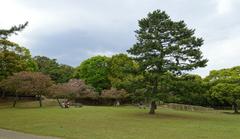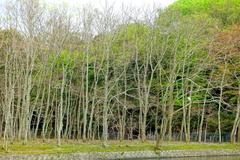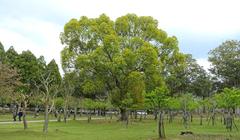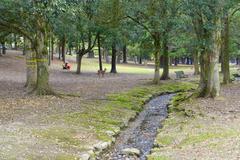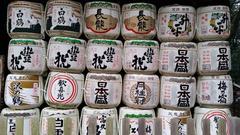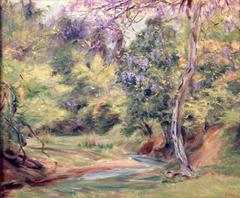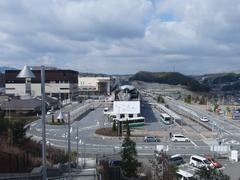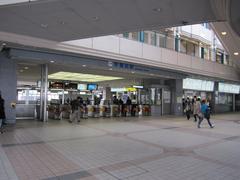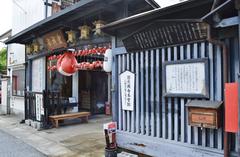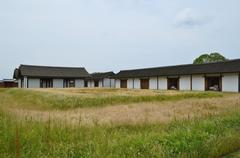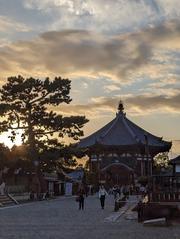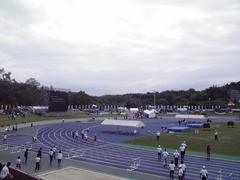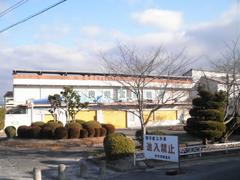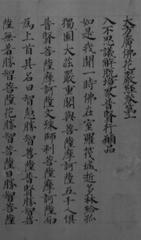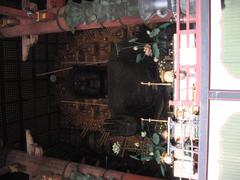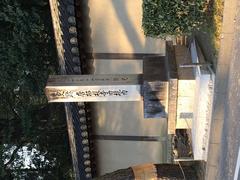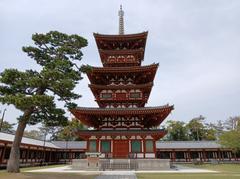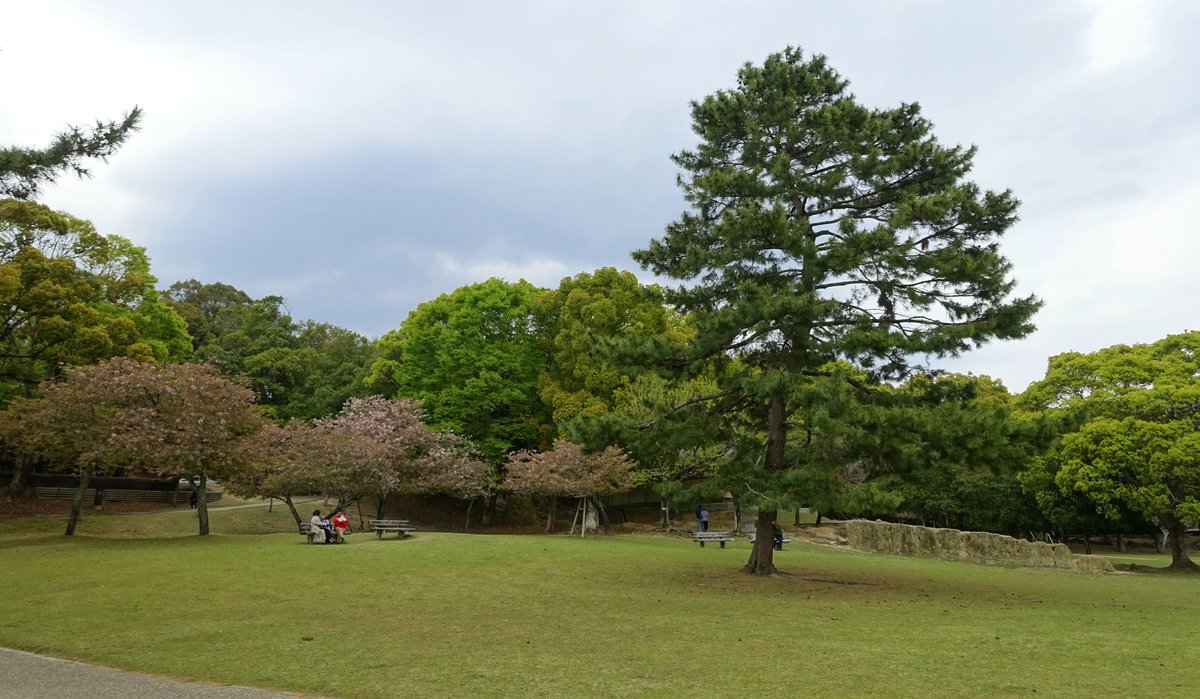
Nara Park Visiting Hours, Tickets, and Historical Sites Guide
Date: 14/06/2025
Introduction to Nara Park: What to Expect
Nara Park, nestled in the ancient city of Nara, Japan, is a living testament to the country’s magnificent cultural, spiritual, and natural heritage. Established in 1880, the park stretches over 500 hectares and is famed for its freely roaming sika deer, which hold a sacred status as messengers of the Shinto gods. The grounds are home to an extraordinary array of UNESCO World Heritage Sites, such as Tōdaiji Temple, Kasuga Taisha Shrine, and Kōfuku-ji Temple, each offering deep insight into Japan’s early capital and the transformative Nara period (710–784 CE). Visitors can marvel at architectural masterpieces, engage with centuries-old traditions, and immerse themselves in seasonal festivities surrounded by tranquil gardens. Nara Park is open year-round with free entry to its expansive grounds, while individual attractions require admission tickets and have specific visiting hours. This comprehensive guide covers essential details, including visiting hours, ticketing, transportation, seasonal highlights, and practical tips—drawing on trusted sources like the Nara City Tourism Association, Adventure Backpack, and Matcha-JP.
Table of Contents
- Introduction
- History and Cultural Significance
- Architectural Heritage and Religious Influence
- Main Attractions in Nara Park
- Visiting Hours, Tickets, and Accessibility
- How to Get to Nara Park
- Seasonal Highlights and Festivals
- Deer Etiquette and Safety
- Facilities and Services
- Cultural Etiquette and Rules
- Guided Tours and Experiences
- Accessibility for Families and Visitors with Disabilities
- Safety and Emergency Information
- Practical Tips for Visiting Nara Park
- Frequently Asked Questions (FAQ)
- Conclusion
History and Cultural Significance
Nara Park is at the heart of Nara, Japan’s capital from 710 to 784, a period notable for political unification, the spread of Buddhism, and cultural exchanges with China and Korea (UNESCO). The park encompasses more than 500 hectares filled with UNESCO World Heritage Sites, including Tōdaiji Temple, Kasuga Taisha Shrine, and Kōfuku-ji Temple (Nara City Tourism Association). These sites provide unparalleled insight into the development of Japanese architecture, religion, and society.
Architectural Heritage and Religious Influence
Tōdaiji Temple: The Great Buddha and National Unity
Tōdaiji Temple, founded in the 8th century, is renowned for its Daibutsuden (Great Buddha Hall), one of the world’s largest wooden structures, housing a 15-meter bronze Great Buddha statue. The temple was constructed to unite Japan spiritually and politically and remains a major religious and cultural destination (Adventure Backpack).
Kōfuku-ji Temple: Fujiwara Clan Legacy
Originally established in 669 and relocated to Nara in 710, Kōfuku-ji Temple served as the Fujiwara clan’s family temple. Its striking five-story pagoda—Japan’s second tallest—dominates the skyline and exemplifies early Buddhist architectural beauty (Adventure Backpack).
Kasuga Taisha Shrine and the Sacred Forest
Kasuga Taisha Shrine is celebrated for its vivid vermilion halls and thousands of stone and bronze lanterns. Set at the edge of the primeval Kasugayama Forest, a sacred Shinto site, the shrine fosters a deeply spiritual atmosphere within the park (UNESCO).
Main Attractions in Nara Park
Tōdaiji Temple and the Great Buddha (Daibutsu)
Tōdaiji Temple is a UNESCO World Heritage Site and a centerpiece of Nara Park. Founded in 752 CE, its massive Daibutsuden is among the largest wooden buildings globally and houses an immense bronze Buddha (Vairocana) standing 15 meters tall and weighing over 500 tons (nomadasaurus.com). The temple complex also features the Nandaimon (Great South Gate) and a famous pillar with a hole said to grant enlightenment to those who crawl through (travelyesplease.com).
Practical Information:
- Hours: 7:30 am–5:30 pm (April–October), 8:00 am–5:00 pm (November–March)
- Entry: Admission fee required for Daibutsuden Hall
- Free English-speaking volunteers often available (travelyesplease.com)
Nara’s Sacred Deer
Nara Park is home to over 1,300 free-roaming sika deer, recognized as a Natural Monument of Japan (narapark.org). Sacred in Shinto belief as divine messengers—especially for Kasuga Taisha Shrine—the deer are a central part of the park’s allure. Feeding deer with “shika senbei” (deer crackers) is a cherished visitor activity, and the deer are known to bow in exchange for treats (umamibites.com; lala-love-nippon.com).
Visitor Tips:
- Use only official crackers
- Deer may become assertive when seeking food
- Hold out empty hands after feeding
- Respect the deer’s sacred status (umamibites.com)
Kasuga Taisha Shrine
Kasuga Taisha Shrine is a UNESCO World Heritage Site and a major Shinto sanctuary. Founded in 768 CE, it is famous for its walkways lined with about 2,000 stone lanterns, as well as 1,000 hanging bronze lanterns in the inner precincts. The shrine is periodically rebuilt every 20 years, upholding the Shinto principle of renewal (travelyesplease.com).
Practical Information:
- Hours: 6:30 am–5:30 pm (March–October), 7:00 am–5:00 pm (November–February)
- Free entry to outer grounds; admission fee for inner area
Kōfuku-ji Temple
Kōfuku-ji Temple boasts a five-story pagoda and several ancient halls. Established in 669 CE, it was among the Seven Great Temples of Nara and is now part of the UNESCO World Heritage “Historic Monuments of Ancient Nara” (travelyesplease.com).
- The pagoda offers iconic views, especially during cherry blossom season
- The National Treasure Museum displays Buddhist art and artifacts
Nara National Museum
The Nara National Museum is renowned for its collection of Buddhist art, including sculptures, paintings, and ritual objects. The museum’s annual Shōsōin Exhibition displays imperial treasures from the 8th century (nomadasaurus.com).
Practical Information:
- Admission fee required
- Visit the official website for current exhibitions and hours
Isuien and Yoshikien Gardens
Both Isuien Garden and Yoshikien Garden are tranquil spaces near Tōdaiji. Isuien features Edo- and Meiji-era gardens with ponds and tea houses, while Yoshikien is known for its moss garden and seasonal flowers (nomadasaurus.com).
- Isuien charges admission; Yoshikien is often free for foreign tourists
Nigatsudo Hall
Nigatsudo Hall offers panoramic views of Nara Park. It is part of the Tōdaiji complex and hosts the Omizutori ceremony, an important Buddhist ritual held each March.
- No admission fee
- Known for sunset views and its annual fire and water ceremony
Himuro Jinja Shrine
Himuro Jinja Shrine, near the park entrance, is dedicated to the deity of ice and is particularly scenic during cherry blossom season.
Visiting Hours, Tickets, and Accessibility
- Nara Park: Open 24 hours, free entry
- Tōdaiji Temple: 7:30 am–5:30 pm (April–October), 8:00 am–5:00 pm (November–March), ~¥600 for adults
- Kasuga Taisha Shrine: 6:30 am–5:30 pm (March–October), 7:00 am–5:00 pm (November–February), fee for inner area
- Kōfuku-ji Temple: 9:00 am–5:00 pm, fee for museum and some halls
- Nara National Museum: 9:30 am–5:00 pm, admission varies
Wheelchair access and accessible facilities are available at major sites, but some historic structures may have limited access. Check individual venue websites for detailed accessibility information.
How to Get to Nara Park
- From Kyoto: JR Nara Line or Kintetsu Nara Line (approx. 45–60 minutes)
- From Osaka: JR Yamatoji Line or Kintetsu Nara Line (approx. 35–50 minutes)
- From Tokyo: Tokaido Shinkansen to Kyoto, then JR Nara Line (total ~3.5 hours)
Both Kintetsu-Nara and JR Nara stations are close to the park. Local buses and taxis are available, and most attractions are within walking distance (Kintetsu Railway; Danayao).
Seasonal Highlights and Festivals
Spring: Cherry Blossoms
Late March to early April brings cherry blossoms, with over 1,500 trees creating stunning displays around Sarusawa Pond, Tōdaiji, and park avenues (Matcha-JP). The Omizutori ceremony at Nigatsudo Hall (March 1–14) is a major spring tradition.
Summer: Lush Greenery
Summer features vibrant hydrangea blooms (June–July) at nearby Yatadera Temple and the magical Nara Tokae Lantern Festival in August, when thousands of lanterns illuminate the park (Japan Travel).
Autumn: Colorful Foliage
From late October to mid-November, the park’s maples and ginkgos turn vivid shades of red and gold, especially around Kasuga Taisha and Wakakusa Hill (Salt in Our Hair).
Winter: Quiet Beauty
Winter brings peaceful scenes, with fewer crowds and occasional snow. New Year’s celebrations at Kasuga Taisha and Tōdaiji attract worshippers.
Major Festivals
- Nara Tokae Lantern Festival (August): 20,000 lanterns create a sea of lights (Matcha-JP)
- Chugen Mantoro Festival (Feb/Aug): Kasuga Taisha lights 3,000 lanterns (Matcha-JP)
- Omizutori (March): Ancient fire and water ceremony at Nigatsudo Hall (Matcha-JP)
- Kasuga Wakamiya On-Matsuri (December): Traditional performances and rituals at Kasuga Taisha (Japan Travel)
Deer Etiquette and Safety
- Feed only official deer crackers
- Be mindful: deer may bow but can be assertive for food
- Avoid teasing or chasing deer
- Supervise children closely
- Dispose of packaging responsibly
(Matcha-JP; Daily Life in Japan)
Facilities and Services
- Restrooms: Clean and accessible facilities throughout the park
- Tourist Information: NARA Visitor Center & Inn offers maps, Wi-Fi, and multilingual support (Sarusawa Nara)
- Luggage Storage: Coin lockers at stations and visitor center
- Food: Local specialties like kakinoha-zushi and matcha sweets, with many cafes and street stalls
- Bicycle Rental: Available near stations; avoid riding within temple grounds
Cultural Etiquette and Rules
- Remove hats and shoes where required
- Maintain quiet, especially at religious sites
- Respect the deer and avoid feeding outside designated areas
- Smoking is prohibited in most park areas
Guided Tours and Experiences
- Join historical and cultural walking tours
- Participate in workshops (tea ceremony, pottery) at the visitor center
- Take nature walks up Mount Wakakusa for panoramic views (Danayao)
Accessibility for Families and Visitors with Disabilities
- Paved main paths for strollers and wheelchairs; some sites may have steps or gravel
- Baby changing and accessible restroom facilities available
Safety and Emergency Information
- Nara Park is very safe; dial 110 for police and 119 for emergencies
- Nearest hospital: Nara Medical University Hospital (20 min by taxi)
Frequently Asked Questions (FAQ)
What are Nara Park’s visiting hours?
Nara Park is open 24 hours, but attractions have their own schedules (see above).
Do I need tickets for Nara Park?
The park is free, but temples, shrines, and museums have admission fees.
Are the deer safe to feed?
Yes, with official crackers and respectful behavior.
Can I rent a bicycle?
Yes, near the stations; avoid riding in temple areas.
Is Nara Park stroller and wheelchair accessible?
Main paths are accessible, but some areas may be challenging.
Summary
Nara Park is a harmonious blend of nature, history, and culture, offering visitors a unique experience in the heart of Japan. From iconic temples and sacred deer to seasonal festivals and tranquil gardens, the park is accessible year-round and equipped for visitors of all ages and abilities. Plan your visit around the park’s hours and events, respect local traditions, and enhance your journey with guided tours or workshops. For the latest information, download the Audiala app and consult official park resources.
Visuals and Media Suggestions
- Cherry blossoms at Tōdaiji Temple (alt=“Cherry blossoms at Tōdaiji Temple in Nara Park”)
- Lanterns at the Nara Tokae Festival (alt=“Nara Tokae Lantern Festival illuminated lanterns at Nara Park”)
- Autumn foliage at Kasuga Taisha Shrine (alt=“Autumn leaves at Kasuga Taisha Shrine in Nara Park”)
- Hydrangeas at Yatadera Temple (alt=“Hydrangea blooms at Yatadera Temple near Nara Park”)
Internal Links
Official Sources and Further Information
- Nara City Tourism Association
- Adventure Backpack
- Matcha-JP
- Sarusawa Nara
- Nara National Museum
- Kintetsu Railway
For more travel tips, download the Audiala app and follow us on social media for the latest updates, guides, and event information.
